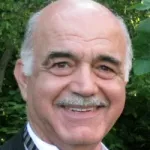NeuroVentures Funded Grant
Merritt Maduke, Molecular & Cellular Physiology
Stephen Baccus, Neurobiology
Kim Butts Pauly, Radiology
Butrus Khuri-Yakub, Electrical Engineering
Real-time control of electrical activity in the nervous system is a critical tool for understanding how neural circuits of the brain function. In a clinical setting, focal electrical stimulation of the brain can produce a substantial improvement in patients with advanced Parkinson’s disease, and has been employed in other neuropsychiatric diseases. Current existing methods to control neural activity include pharmacology, genetics, electrical, optical and magnetic stimulation. All of these approaches are either invasive, or lack the spatiotemporal specificity to activate cells or circuits on the spatial and temporal scales that the nervous system operates. Ultrasound stimulation is a noninvasive approach that can deliver energy to the brain localized in space and time. Although it has been known for more than 75 years that ultrasound can change neural activity, it has only recently been demonstrated that ultrasound can specifically stimulate electrical activity in slices and in the intact brain. Controlling neural activity using high frequency focused ultrasound has great potential both for understanding how the circuitry functions, and for diagnostic and therapeutic use.
In this proposal we will study and develop the use of ultrasonic neurostimulation from molecules to behavior. Our goals are to 1) develop new technologies for high resolution patterned ultrasonic neurostimulation, 2) understand the biophysical basis for the mechanical and electrical effects of ultrasound on cell membranes, 3) develop ultrasonic stimulation for use in isolated neural circuits with millisecond and single cell precision and understand its effects, 4) develop in-vivo ultrasonic stimulation through the skull in rats toward an eventual use both in basic studies of behaving animals and in the treatment of patients. It is also expected that these studies will lay the groundwork for development of a noninvasive ultrasonic neuroprosthetic to deliver sensory information to a damaged retina and alter the activity of damaged deep brain structures.





